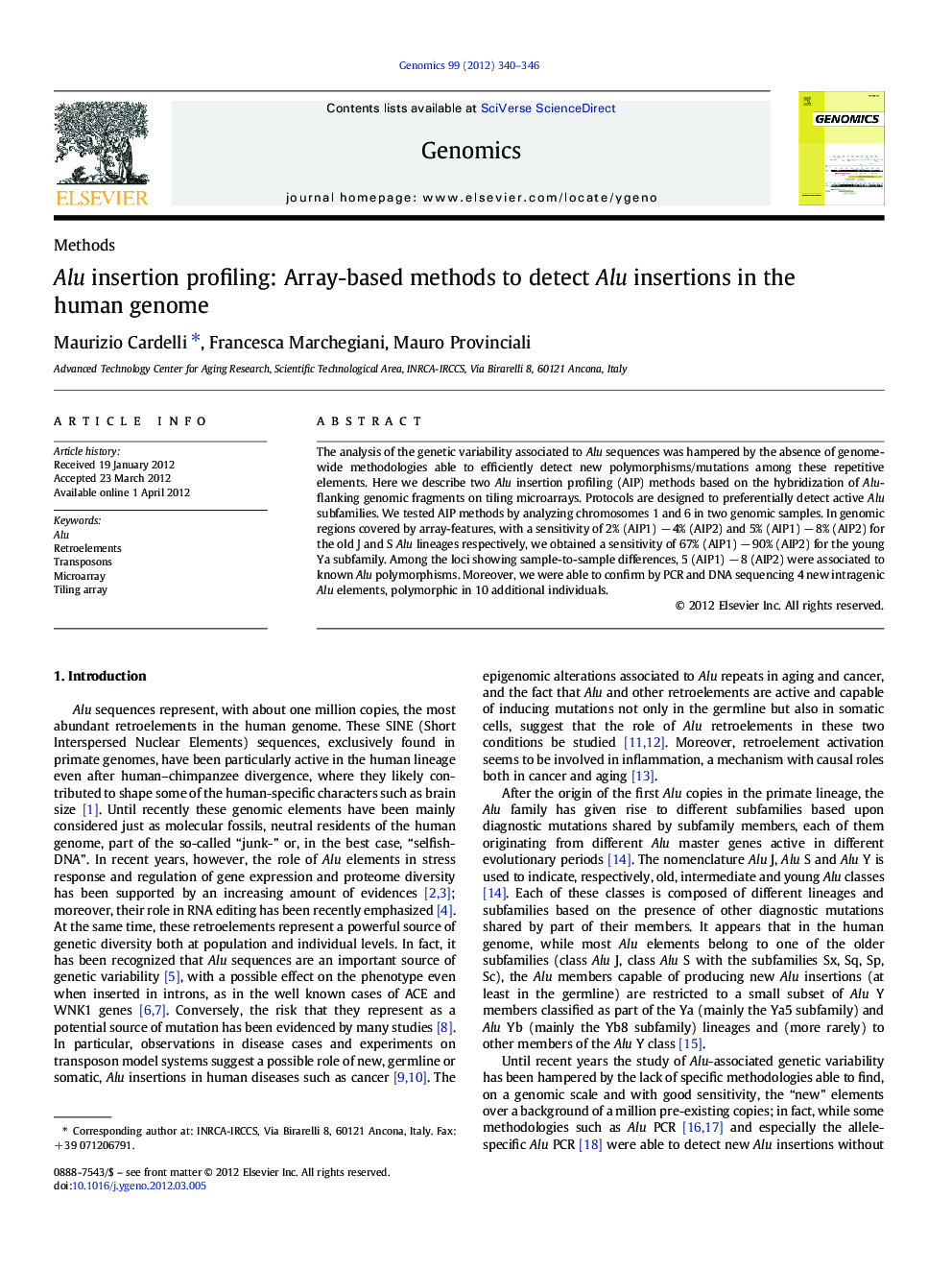| کد مقاله | کد نشریه | سال انتشار | مقاله انگلیسی | نسخه تمام متن |
|---|---|---|---|---|
| 2820925 | 1160907 | 2012 | 7 صفحه PDF | دانلود رایگان |

The analysis of the genetic variability associated to Alu sequences was hampered by the absence of genome-wide methodologies able to efficiently detect new polymorphisms/mutations among these repetitive elements. Here we describe two Alu insertion profiling (AIP) methods based on the hybridization of Alu-flanking genomic fragments on tiling microarrays. Protocols are designed to preferentially detect active Alu subfamilies. We tested AIP methods by analyzing chromosomes 1 and 6 in two genomic samples. In genomic regions covered by array-features, with a sensitivity of 2% (AIP1) − 4% (AIP2) and 5% (AIP1) − 8% (AIP2) for the old J and S Alu lineages respectively, we obtained a sensitivity of 67% (AIP1) − 90% (AIP2) for the young Ya subfamily. Among the loci showing sample-to-sample differences, 5 (AIP1) − 8 (AIP2) were associated to known Alu polymorphisms. Moreover, we were able to confirm by PCR and DNA sequencing 4 new intragenic Alu elements, polymorphic in 10 additional individuals.
► We present two tiling-array-based methods to map Alu sequences in human DNA samples.
► The methods were tested by analyzing two genomic DNA samples for chromosomes 1 and 6.
► A high sensitivity for the “young” Alu families allows the detection of polymorphisms/mutations.
► A low sensitivity for the “old” Alu families allows for a low amount of unwanted signals.
► 4 new Alu insertions were found and verified in genes MLK4, WDR64, NKAIN2, PARK2.
Journal: Genomics - Volume 99, Issue 6, June 2012, Pages 340–346